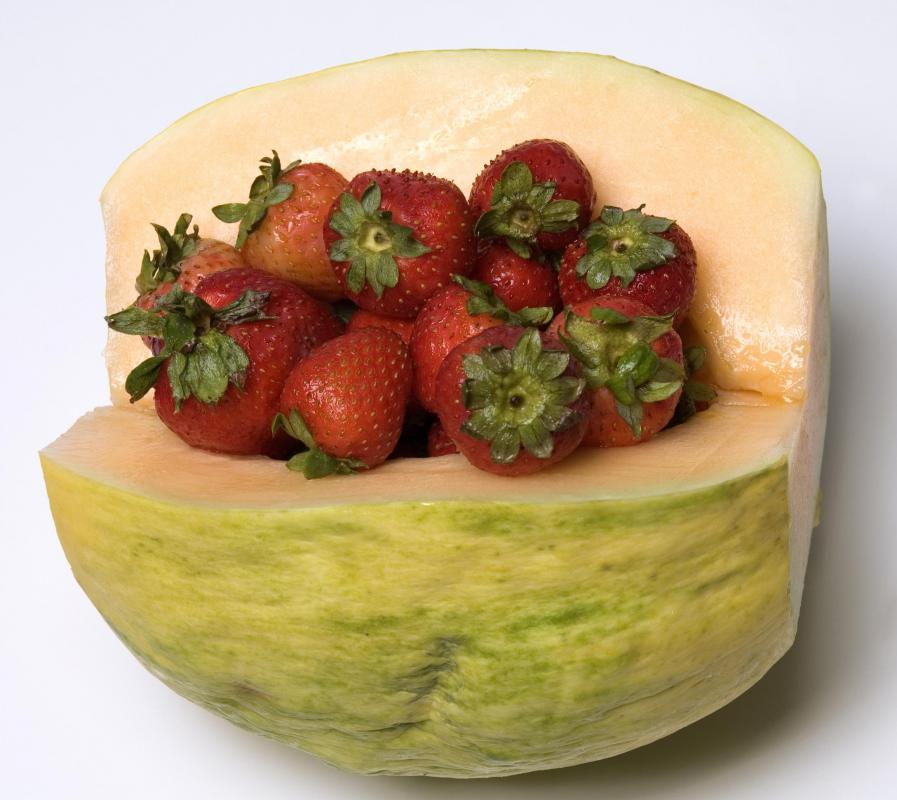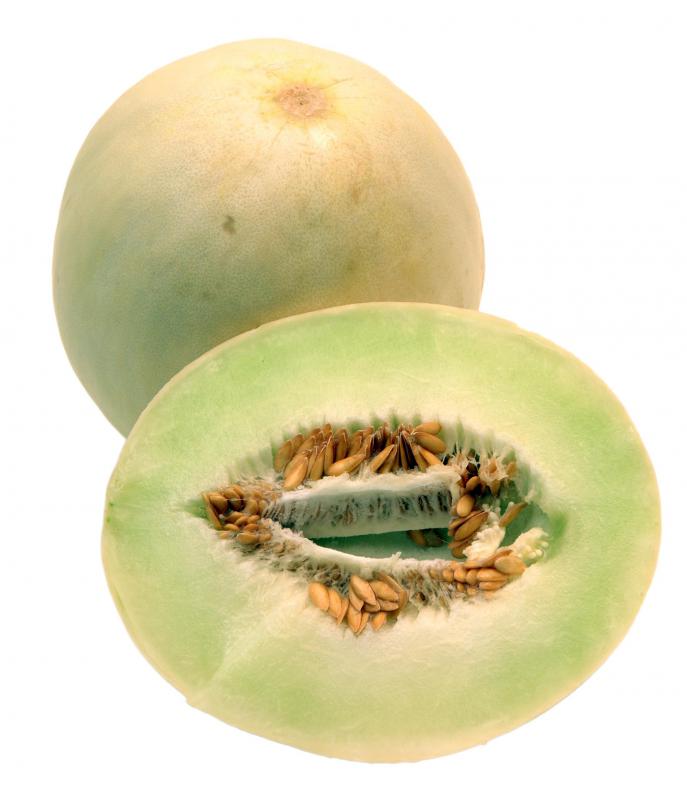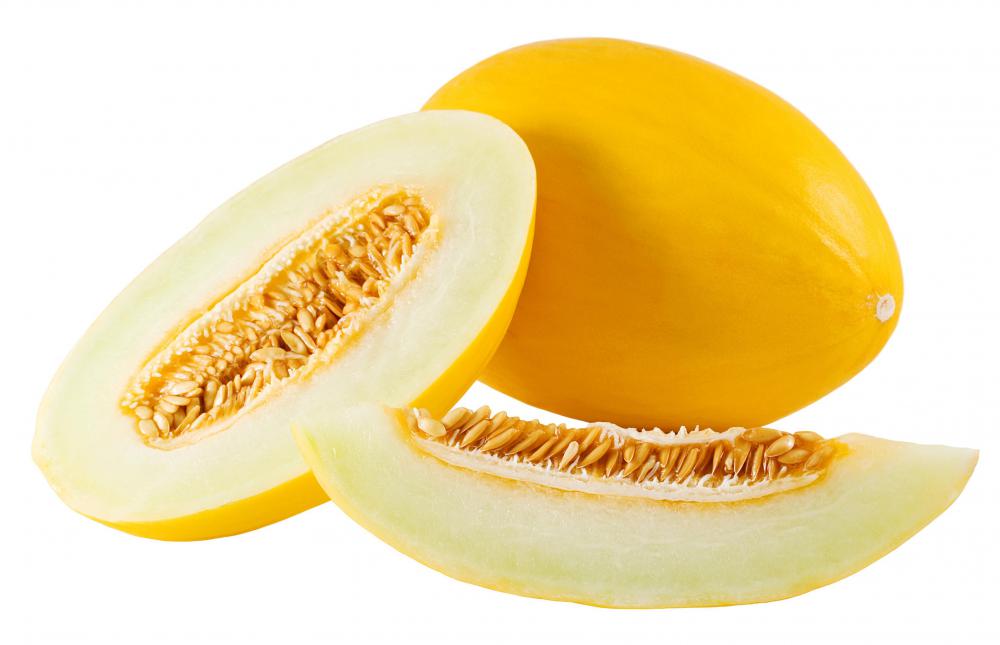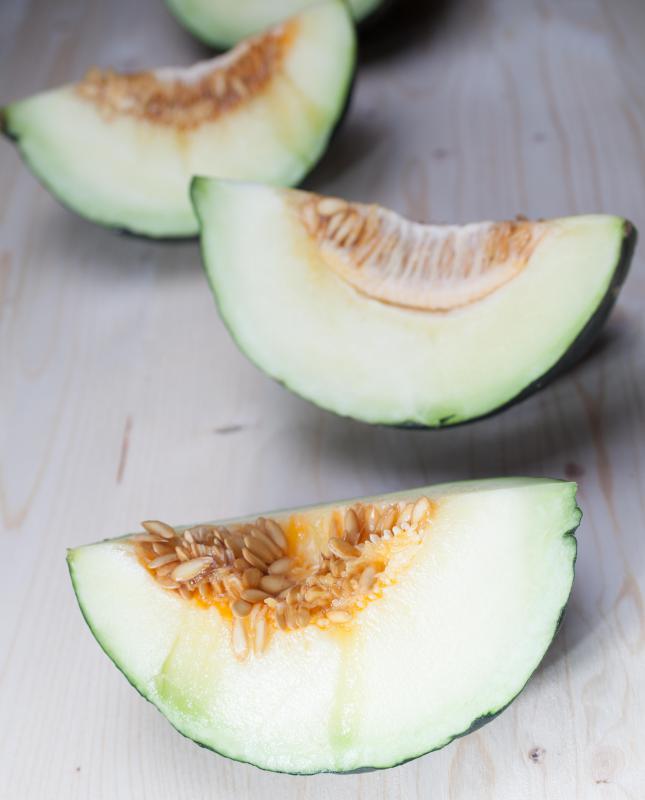At WiseGEEK, we're committed to delivering accurate, trustworthy information. Our expert-authored content is rigorously fact-checked and sourced from credible authorities. Discover how we uphold the highest standards in providing you with reliable knowledge.
How can I Pick out Good Melons in the Store?
As many melon fans know, an excellent melon has crispy, sweet flesh and a refreshing flavor. Picking out melons can be difficult, however, if you do not know exactly what you are looking for. Fortunately, there are a few clues which can be used to discern a really great melon. Good melons are often heavy for their size, and sound hollow when tapped. The blossom end should yield slightly when pressed, but the fruit itself should not be mushy or slimy.
When you are picking out melons, it helps to think about what you are looking for in a melon. Most people define sweetness and crisp flesh as ideal traits in a melon. Some melons are climacteric fruits, which means that they do not ripen off the vine; watermelon is one of these. Others, like American cantaloupe, will continue to ripen slightly, but generally get softer rather than sweeter. Therefore, what you see in the store is often what you get, so you need to be methodical while choosing melons.

Start by taking a quick look at the selection when you are picking out melons. A ripe melon has a creamy to yellow spot on one side under the space where the stem was. This spot comes from lying on the ground while the melon ripened. On one end of the melon, a small indentation marks the space where the flower used to be. If you press this indentation and it yields slightly, the melon is ripe. These basic ripeness indicators are useful when choosing melons, but they do not guarantee a perfect melon.

For a truly sweet melon, look for melons with sugar beads and scars. Sugar beads are small droplets of sugar which have oozed out around the stem. Sugar scars are simply rough patches along the surface of the fruit, often streaked with sugary syrup. These physical clues while you are picking out melons can help you narrow down the selection for the next stage.

Start by picking a melon up. The melon should feel heavy for its size, indicating that it has a great deal of sweet juice. Next, gently tap the melon close to your ear. Tapping should yield a hollow sound, rather than a dull thud. The melon should also not feel mushy or slimy, as these are signs that the melon is past its prime. Take your time with these steps when you are picking out melons, since you want to make sure that you get the best possible fruit.

After you take a melon home, it can be stored for up to three days under refrigeration. Melons should be washed before being opened, to remove any traces of bacteria which may have adhered to the rind. Once opened, melon can be eaten plain, added to fruit salads, or used to make an assortment of foods like melon sorbet. You may also find that melons taste better when they are served at room temperature, rather than chilled.
AS FEATURED ON:
AS FEATURED ON:

















Discussion Comments
I have two golden rules that I follow when picking out all of my fruits and veggies at the store. First I smell the fruit. You can tell a melon is ripe if it has a sweet flowery smell to it.
The second rule is to feel the fruit or vegetable for any soft spots. Not every fruit and vegetable is the same. You're supposed to check the two ends of a cucumber for example, because that's where it will go soft first. Melons should be firm all around. Several soft spots means that it has begun to spoil.
I didn't know that melons fall off the vine when it is ripe. I will check for attached vines when I buy melons from now on. Looking for any cracks at the stem of melons is also a really good tip. Cracks show that it has ripened to maturity.
I always use the tapping method for melons and watermelons which my mom taught me how to do. I always tap at the top end of the melon, the side that was attached to the vine. I guess my tapping is sort of like a slap. I don't know how I do it exactly, but I can tell from the noise it makes when I do this whether it is good inside or not.
I'm usually more worried about a melon going bad rather than its ripeness. If it has gone bad, it sort of sounds empty when you tap it. When it is fresh and full of fruit, you can tell from the sound and the tightness of the skin that it is good.
Post your comments